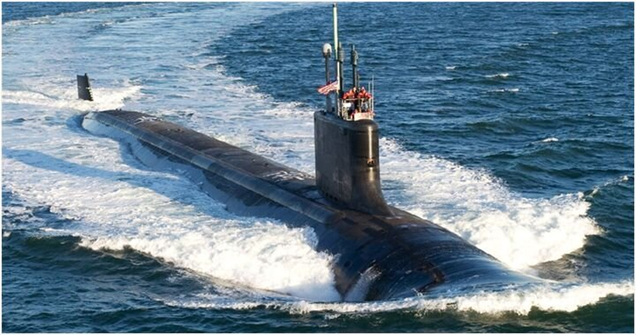
Charles R. Goulding and Preeti Sulibhavi consider patriotic implications of 3D printing in defense applications.
In the June 26th and 27th issue of the Wall Street Journal (WSJ), the review section covered a contentious shareholder meeting that included Phebe Novakovic, the CEO of General Dynamics. Novakovic was challenged by a reporter regarding the appropriateness of her company’s arms sales to Saudi Arabia. Novakovic, the daughter of a Serbian immigrant to the U.S. who became an officer in the U.S. Air Force, calmly gave the reporter a lesson in patriotism appropriate for the 4th of July – Independence Day. She explained that as a leading U.S. defense contractor, the company’s responsibility is to support the country’s goals, not to determine policy.
In the early part of her career, she worked for the CIA and married a former Green Beret. She and her first husband both have MBAs from Wharton School of Business. We have recently written Fabbaloo articles concerning General Dynamics’ large submarine orders and the company’s opportunities with 3D printing. General Dynamics is one of the participants in an interesting joint 3D printing research initiative that includes Navy-related agencies and Huntington Ingalls Industries’ leading submarine building competitor.

MELD Manufacturing
Huntington Ingalls Industries, along with Electric Boat and the U.S. Navy, have teamed up to scale up 3D printing. The joint project involves MELD Manufacturing, a specialization in additive manufacturing, coating applications, component repair, metal joining and custom metal alloy and metal matrix composite billet and part fabrication. The team effort is focused on utilizing MELD technology to 3D print metal parts up to 36 inches with the ability to increase by several meters over time. The team members are:
- General Dynamics NASSCO
- General Dynamics Electric Boat
- Huntington Ingalls Industries
- General Dynamics BIW
- MELD Manufacturing
- NAVSEA
The project will include investigating and assessing feasibility and potential for scaling up 3D printing technology to increase the scale of printed castings.
The Research & Development Tax Credit
The now permanent Research and Development (R&D) Tax Credit is available for companies developing new or improved products, processes and/or software. Eligible costs include U.S.-based employee wages, cost of supplies consumed in the R&D process, cost of pre-production testing, contract research expenses, and certain costs associated with developing a patent. As of 2016, eligible startup businesses can use the R&D Tax Credit against $250,000 per year in payroll taxes.
3D printing can help boost a company’s R&D Tax Credits. Wages for technical employees creating, testing and revising 3D printed prototypes can be included as a percentage of eligible time spent for the R&D Tax Credit. Similarly, when used as a method of improving a process, time spent integrating 3D printing hardware and software counts as an eligible activity. Lastly, when used for modeling and preproduction, the costs of filaments consumed during the development process may also be recovered.
Whether it is used for creating and testing prototypes or for final production, 3D printing is a great indicator that R&D Credit eligible activities are taking place. Companies implementing this technology at any point should consider taking advantage of R&D Tax Credits.
Conclusion
Ms. Novakovic stated her belief in a rare Zoom interview with the WSJ, “We have a moral imperative to support our Nation and to support our Nation’s allies in the work they do to make our democracy safe.”
